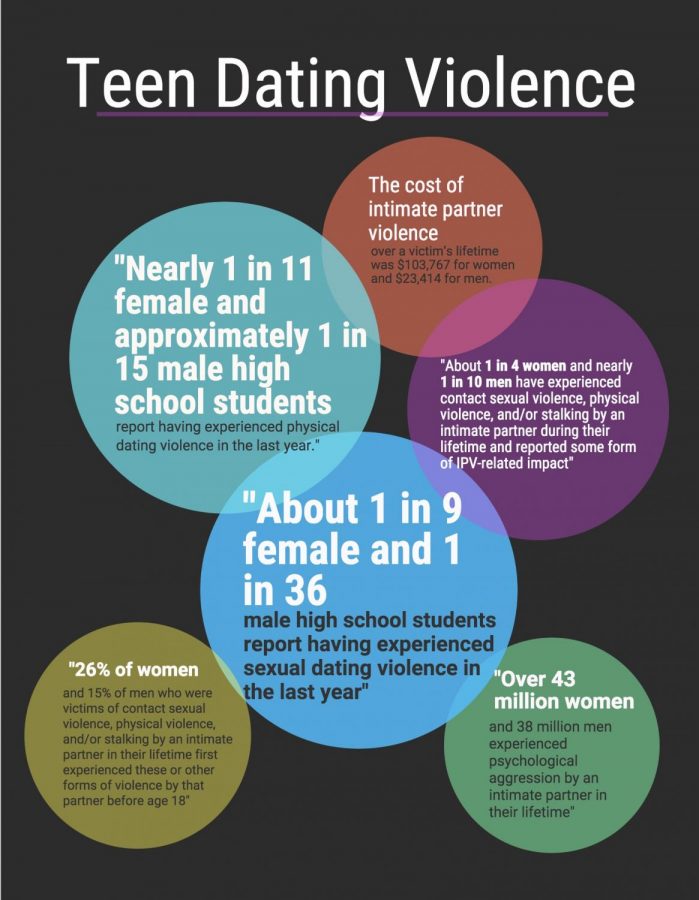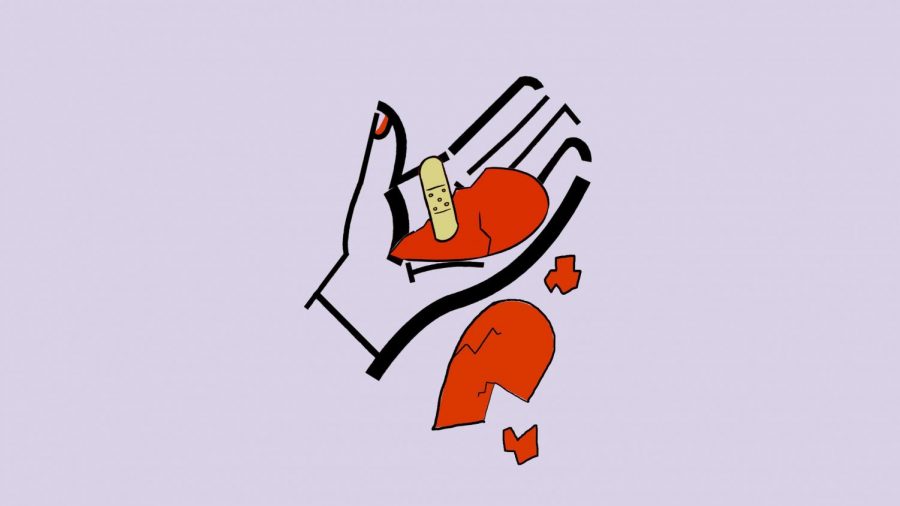When Teenage Relationships Turn Abusive
Despite its glossy appearance, teen dating can entail dangers that go hidden even to the victims themselves.
Dating has long been a part of the teenage experience, but for all of its benefits, it’s imperative to know the warning signs when relationships turn abusive.
With Valentine’s Day and Morp a month away and Prom preparations soon to follow, there’s perhaps no better time of the year to be in a relationship. It’s a daily spectacle. Couples hold hands in the hallways, Snapchats featuring significant others are posted daily, and for many teenagers, the desire for a companion is an ever-present thought.
But there is a dark side to relationships to which many teenagers turn a blind eye.
When most people think of dating violence, the common image that comes to mind is of a woman covered in bruises and scars. The abuse is obvious and impossible to ignore. But in reality, dating violence is much more than physical abuse. It can be sexual abuse, when the damage is concealed, and speaking out is questioned by outsiders. It can be emotional, which often appears in a more subtle way, and others may question if it really is abuse. No matter what form dating violence takes, it exacts a toll on both the mind and the body.
According to loveisrespect.org, 1.5 million, or one in three teenagers will experience emotional, sexual, or physical abuse before they become adults. To put this number in perspective, there are generally around 25 students in one class NASH, and according to the statistic, eight of them have been or will be a victim of dating violence before adulthood. Think about how many students you pass in the hallway alone — their stories are unknown, and their struggles may not be noticeable.
As teenagers in today’s vocal society, most of us are familiar with the word “consent.” In simple terms, consent is a mutual agreement between both partners. But when consent is based on assumptions, the risk of being taken advantage of arises. If one partner feels pressure to please the other, or if one partner reacts negatively with anger or sadness, there is no consent. Healthy relationships involve the discussion of boundaries, the absence of which means that there is the potential for harm.
Abusive relationships are toxic and hard to escape. In some cases, the victim may not even realize it is abuse until they leave the relationship, assuming that will ever happen. The combination of a desire for human affection, the feeling of trust and self-worth, and youthful naiveté form a vicious and seemingly inescapable cycle of abuse.

February is Teen Dating Violence Awareness Month. Across the country, teens and their supporters will join in the mutual goal of spreading awareness about the prevalence of teen dating violence. This year, the campaign theme is “#1Thing,” meaning that if everyone can educate themselves to learn one thing about teen dating violence, we can do more the prevent innocent adolescents from becoming victims. My goal is to do my small part in educating NASH on the topic in order to prevent more harm, and I encourage you to do the same.
If you or a friend needs help with an abusive relationship, contact any of the following:
Domestic Violence Hotline: 1−800−799−7233
Sexual Assault Services: 800-656-4673
LGBTQ Talkline: 1-800-246-7743
National Suicide Prevention Hotline: 1-800-273-8255
Planned Parenthood: 1-800-230-PLAN
Or take advantage of resources here at NASH, beginning with the Counseling Office.

Reese Marsalis is a senior and excited to contribute to The Uproar for her first time. In her free time, Reese enjoys playing lacrosse, reading, exploring, and spending time with friends and family.

